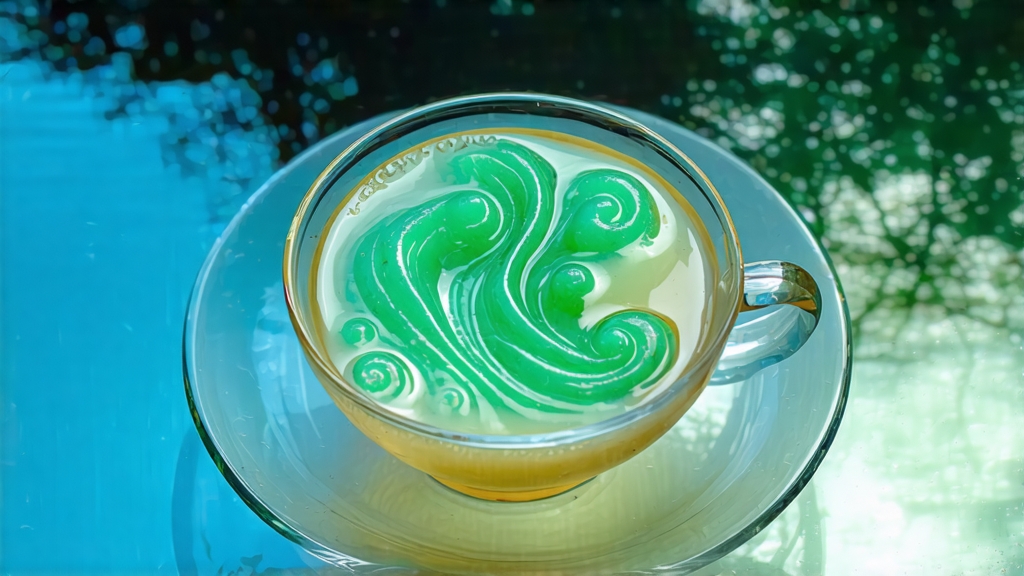
Among the jade pantheon of Chinese green teas, none carries the lake-born perfume and imperial romance of Biluochun. Originally named “Xia Sha Ren Xiang” (“Scary Fragrance”) by Qing-dynasty farmers who found its aroma almost supernatural, the tea was later rechristened by the Kangxi Emperor after its snail-shell shape and the emerald hue of early spring. For three centuries the tiny spirals have been inseparable from the misty waters of Lake Tai, the vast freshwater basin where Jiangsu’s cool spring breezes meet orange-blossom, peach and loquat orchards. Those fruit trees, inter-planted among the tea bushes, lend Biluochun its signature orchid-and-apricot nose—an aroma that arrives before the liquor even touches the lips.
Strictly speaking, only leaf picked within a fifteen-day window in late March within Dongting East and West Mountains qualifies as original-grade Biluochun. The cultivars are local heirloom clones—tiny-leaf, slow-growing, frost-resistant—whose roots plunge into quartz-rich subsoil laced with lake humidity. Each hectare yields barely 250 kg of finished tea, making the genuine crop rarer than silver needles. Farmers still follow the Ming-era rule “ten-thousand buds make five-hundred grams,” meaning every kilo needs two hundred thousand hand-plucked tips, each consisting of an unopened bud and the adjacent half-expanded leaf.
The craft begins the moment the basket hits the shoulder: leaves must reach the village workshop within two hours to preserve the dewy sheen. Withering is skipped; instead the fragile tips are immediately “sha qing” (kill-green) on a cast-iron wok heated to 180 °C. A single maker controls 1.5 kg per batch, tossing, pressing and rolling the leaves against the iron for precisely three minutes. The motion is a figure-eight: palms compress the buds just long enough to rupture surface cells, releasing fragrant enzymes, yet gentle enough to keep the hairs intact. Temperature is then dropped to 80 °C for the spiral-shaping stage. Here the master’s wrists become a potter’s wheel, coaxing each bud into a tight whorl that will later unfurl like a fern in hot water. When the leaf feels “silkworm-cocoon firm” and the downy hairs turn silver-white, it is finished with a cool-air fanning that sets the jade color. Total processing time: forty minutes from tree to tea—one of the shortest yet most labor-intensive schedules in China.
To brew Biluochun like a Suzhou native, choose a tall cylindrical glass of 250 ml capacity; transparency allows you to watch the “snowflakes fall into jade.” Use 3 g of leaf—roughly a level teaspoon—and water at 75 °C. First warm the glass, then pour the water to one-third height. Tip the leaves in; they will drift like tiny submarines before slowly absorbing water and sinking. Top up after thirty seconds. The ideal steep lasts sixty seconds, but the true joy is in the re-infusions: four are standard, each adding five seconds, revealing successive layers of orchid, honeydew and a faint marine note reminiscent of lake breeze. Never cover the glass; trapping the steam cooks the delicate hairs and mutes the aroma.
Professional cupping follows a tighter protocol. Five grams are placed in a 110 ml white porcelain gaiwan; water is precisely 80 °C, infusion time three minutes. The first evaluation is of dry fragrance: shake the warmed gaiwan and inhale—top-grade leaf releases a sharp, stone-fruit bouquet with no grassy heaviness. After infusion, inspect the liquor color: it should be “crystal-moonlight” pale, never chartreuse. Slurp loudly to aerate; the texture must coat the tongue like light cream, vanishing into a cool, minty finish. Finally turn to the spent leaves: intact single tips, uniformly olive, with no red edges betraying overheating.
Biluochun’s subtlety makes it an ideal gateway for newcomers to Chinese greens, yet its complexity rewards lifelong study. Aged examples from cool, sealed storage develop a mellow “rice-milk” sweetness, while the most coveted “Ming-qian” (pre-Qingming) lots can fetch over three thousand US dollars per kilogram at spring auction. Whether you sip it in a Suzhou garden pavilion or a Manhattan studio, the spirals